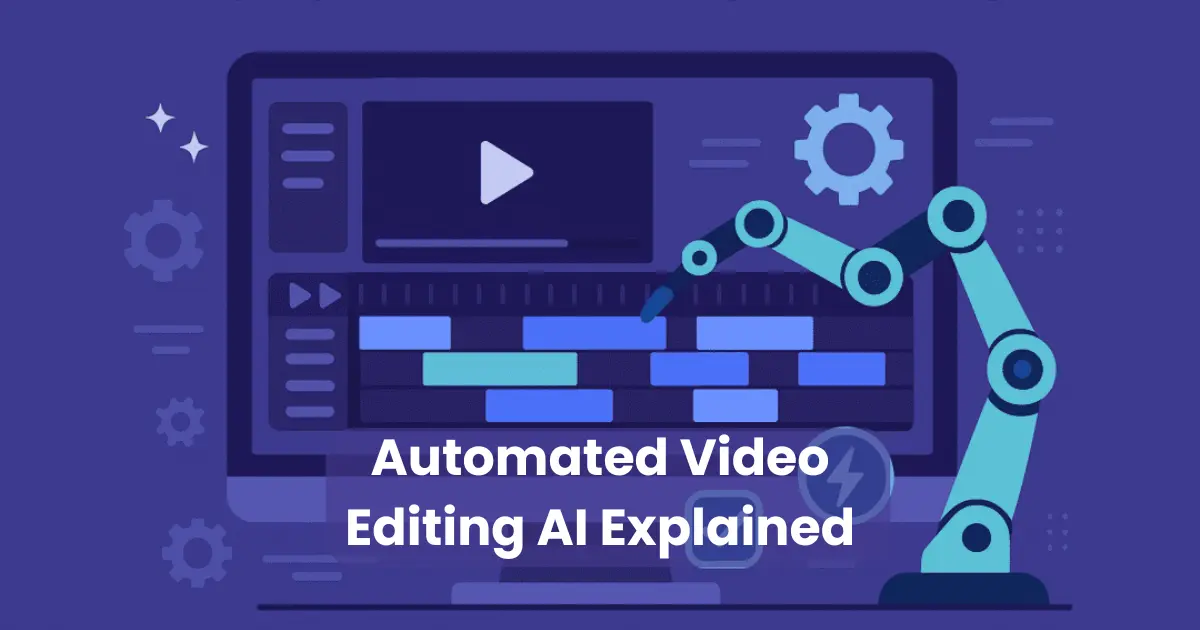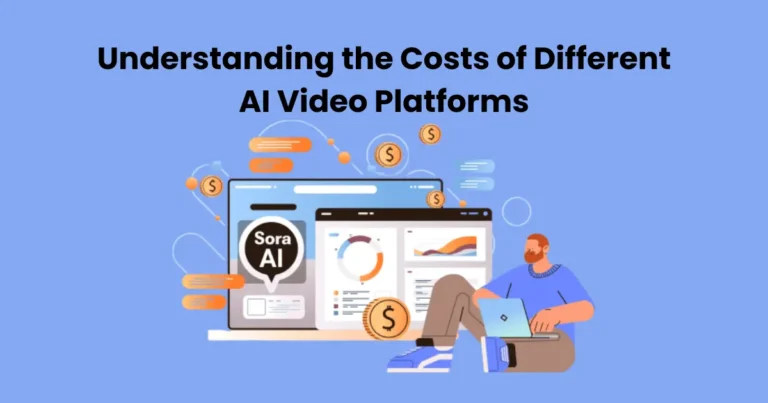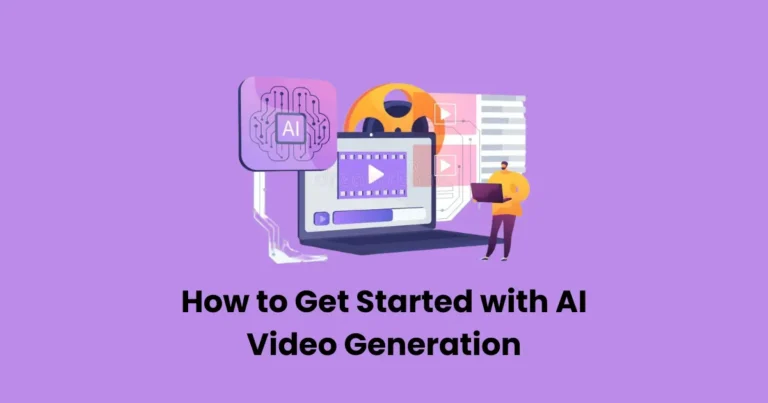Automated Video Editing AI Explained

Contents
- 1 What Is Automated Video Editing AI?
- 2 How Does Automated Video Editing AI Work?
- 3 Key Features of Automated Video Editing AI
- 4 Benefits of Using Automated Video Editing AI
- 5 Limitations and Challenges
- 6 Use Cases Across Industries
- 7 Top Tools Using Automated Video Editing AI
- 8 The Future of AI in Video Editing
In today’s fast-paced digital world, automated video editing AI explained has become a key topic for creators, brands, and digital marketers. With content consumption at an all-time high, the need for quick, high-quality video production has skyrocketed. As a result, artificial intelligence now automates complex video editing tasks that once required hours of manual effort.
Automated systems handle tasks like cutting scenes, adding transitions, adjusting color, and syncing music within minutes. While traditional editing methods remain essential for high-end productions, AI-based tools are revolutionizing many routine editing jobs.
Not only is this shift accelerating production timelines, but it’s also making professional-quality video editing more accessible than ever.
In the following sections, we’ll explore how this technology works, its core benefits, and the tools currently leading the market—all to have automated video editing AI explained in simple, clear terms.
What Is Automated Video Editing AI?
At its core, automated video editing AI refers to the use of artificial intelligence to perform video editing tasks with little to no human input. These tasks include cutting clips, adding transitions, color correction, subtitle generation, and even selecting music—automatically and intelligently. AI streamlines the editing process, enabling even beginners to produce polished videos in a fraction of the time.
To explain automated video editing AI in simpler terms: instead of manually going through hours of footage, AI systems identify key scenes, detect emotions, match audio with visuals, and apply stylistic effects based on pre-set rules or learned behavior.hese systems rely heavily on machine learning, computer vision, and natural language processing.
Once raw video content is uploaded, AI processes it in the background. It selects key highlights, trims unnecessary frames, and renders edits without detailed user intervention. Many tools offer templates and AI recommendations to further personalize the output, ensuring efficient and consistent processing of even large volumes of content.
How Does Automated Video Editing AI Work?
To have automated video editing AI explained in a functional sense, it’s important to look at the technology powering it. Several AI technologies integrate behind the scenes to mimic the decision-making processes typically handled by human editors.

1. Footage Analysis
First, raw video footage is uploaded and analyzed with computer vision algorithms. These algorithms automatically detect objects, people, faces, and even emotions. The data helps determine which segments of the footage are most relevant or appealing.
2. Scene Detection and Segmentation
After visual analysis, the video is segmented into meaningful scenes. This is often based on motion changes, camera angle shifts, or audio cues. Through this, boring or repetitive sections are removed while high-impact moments are retained.
3. Audio and Voice Processing
At the same time, natural language processing (NLP) is applied to audio tracks. AI converts speech into text, generates subtitles, and aligns the narrative with the video timeline. It also reduces background noise automatically.
4. Style and Theme Application
Once scenes are arranged, AI applies pre-defined themes or templates. It inserts music, color filters, transitions, and text overlays based on learned preferences or user-selected styles. Automating this step makes videos visually engaging with minimal manual effort.
5. Final Rendering
Finally, AI renders the video into the desired format, optimizing it to ensure the best quality-to-file size ratio. In some tools, AI also creates multiple versions (e.g., landscape, square, or vertical) automatically for different social media platforms.
These steps enable tasks that once took hours to be completed in minutes. Thanks to this innovation, automated video editing AI provides a real solution for anyone needing professional-quality video at scale.
Key Features of Automated Video Editing AI
When considering automated video editing AI explained from a practical standpoint, the real power lies in its features. These intelligent tools come equipped with functionalities that once required a skilled editor’s attention but are now efficiently handled by algorithms.

1. Auto-Cutting and Trimming
AI scans and shortens clips automatically based on visual and audio markers. It identifies and removes silent pauses, awkward transitions, and irrelevant frames without human intervention.
2. Scene and Emotion Detection
AI detects scene changes, facial expressions, and even emotions, ensuring that impactful or meaningful moments are preserved and highlighted.
3. Smart Transitions and Effects
AI generates transitions between scenes intelligently, matching the tone of the video. It also applies effects such as slow motion or zoom-ins where dramatic emphasis is needed.
4. Audio Enhancement and Sync
AI reduces background noise, levels voices, and syncs music to the visuals seamlessly. It also selects suitable background music based on the video’s pace and mood.
5. Auto Subtitle Generation
AI uses speech recognition to transcribe dialogue and voiceovers, converting them into accurate subtitles. It also styles and positions the subtitles automatically for viewer clarity.
6. Template and Theme Integration
AI applies pre-built themes and branding templates to ensure a consistent visual identity across multiple videos. It also embeds elements like logos, colors, and fonts automatically.
7. Social Media Optimization
AI generates multiple versions of the same video for different platforms (e.g., YouTube, Instagram, TikTok). It adjusts formats and aspect ratios automatically without manual re-editing.
These features streamline the editing process and amplify creativity.To have automated video editing AI explained fully is to understand that the blend of automation and customization is what truly sets it apart from manual editing workflows.
Benefits of Using Automated Video Editing AI
To have automated video editing AI explained in terms of its real-world value, it’s essential to look at the benefits it brings to creators, businesses, and marketers alike. By streamlining processes and enhancing efficiency, AI-powered tools offer a wide array of advantages.

1. Time Efficiency
AI completes editing that once took hours or even days in just minutes. It processes video content in real-time or near real-time, allowing teams to focus on strategy and storytelling instead of technical edits.
2. Cost Reduction
AI reduces the need for manual labor, significantly lowering overall production costs.Freelancers, startups, and small businesses especially benefit from AI tools that would otherwise require expensive software or professionals.
3. Consistency and Scalability
Predefined templates and smart editing routines maintain visual consistency across all videos. As a result, AI makes high-volume content production—especially for social media campaigns—easier to scale and more efficient.
4. Accessibility for Beginners
Professional-level editing features are now accessible to users with little or no editing experience. This democratization of video editing has empowered content creators across industries.
5. Faster Turnaround for Content
Whether it’s for trending social media topics or urgent business needs, AI enables faster publishing. AI enables videos to be edited and released the same day they’re recorded, helping brands stay relevant and timely.
6. Enhanced Creativity
By automating repetitive and technical tasks, AI frees creators to focus on storytelling and creative direction. They can spend more time on content strategy and audience engagement.
When automated video editing AI explained through these benefits, its impact becomes clear: it transforms video production from a time-consuming task into an agile, intelligent, and scalable solution for the modern digital world.
Limitations and Challenges
Even with all its advantages, the technology is not without flaws. To have automated video editing AI explained comprehensively, we must also examine the limitations and challenges that come with relying on AI for video production.
1. Lack of Human Creativity
Although AI applies templates and automated styles efficiently, it still lacks the human touch needed for emotional nuance, storytelling depth, and creative flair.As a result, content may feel too mechanical or generic.
2. Contextual Misunderstanding
AI can misinterpret the context of a scene. For example, it might cut a scene that seems visually irrelevant but holds narrative importance. Consequently, AI may accidentally overlook key moments.
3. Limited Customization
While automated tools offer speed, they often provide limited control over fine-tuned edits. Advanced users may find the tools too rigid when attempting to implement complex transitions or layered visual effects.
4. Technical Dependencies
AI’s smooth functioning depends heavily on high-quality input data.Poor lighting, background noise, or inconsistent footage can reduce the effectiveness of automated tools and require manual correction.
5. Privacy and Data Concerns
Because many AI tools process videos in the cloud, there are concerns about data privacy and content ownership. Sensitive or proprietary footage may be at risk if proper security measures are not in place.
6. Learning Curve and Misuse
Although AI tools simplify editing, some still require a basic understanding of video formats, branding elements, and storytelling goals.Moreover, when used improperly, content can appear disjointed or overly edited.
Therefore, when automated video editing AI explained honestly, it becomes evident that while the technology accelerates many aspects of production, it is not yet a perfect substitute for skilled human editors.
Use Cases Across Industries
To have automated video editing AI explained fully, it’s crucial to explore how various industries are adopting this powerful technology. AI-driven editing tools are reshaping how industries, from marketing to education, create, customize, and share video content.

1. Marketing and Advertising
In digital marketing, AI helps produce video content quickly and at scale, creating personalized ads, product demos, and social media clips. Brands can generate multiple video versions tailored to different audiences without the need to hire a full production team.
2. E-commerce and Retail
Product videos, how-to guides, and promotional reels are generated automatically using pre-set templates. As a result, online stores can showcase hundreds of products with engaging visuals while saving time and resources.
3. Education and E-learning
AI edits lecture recordings, course introductions, and tutorial videos with minimal effort. It removes background noise, adds subtitles, and segments content, allowing educators to focus on teaching instead of post-production.
4. Real Estate
AI tools edit property walkthroughs, drone footage, and client testimonial videos.This allows realtors to highlight key features, apply branding, and maintain visual consistency across listings.
5. Healthcare
Hospitals and clinics use automated video editing AI to produce training modules, patient education videos, and internal communication materials.AI standardizes visuals and automatically blurs sensitive data for compliance.
6. Media and Journalism
Newsrooms use AI to automatically cut, subtitle, and publish short-form video segments based on raw interview or event footage. This speeds up content delivery without sacrificing accuracy.
7. Gaming and Esports
Gameplay highlights, event recaps, and streaming montages are generated by analyzing action sequences and audience reactions—allowing gaming influencers and platforms to engage fans with minimal manual editing.
When automated video editing AI explained in these contexts, its versatility becomes clear: it is not just a convenience, but a transformative force across countless sectors.
Top Tools Using Automated Video Editing AI
To have automated video editing AI explained thoroughly, it’s important to spotlight the leading tools that are currently shaping the industry. These platforms have integrated advanced AI to offer automation, efficiency, and creative assistance in video production.

1. Magisto (by Vimeo)
Magisto uses AI to analyze video footage and automatically create polished edits, complete with music, effects, and transitions. It has been widely adopted by marketers and small businesses for its ease of use and quick turnaround.
2. Pictory
Pictory allows users to convert long-form content such as blogs or webinars into short, shareable videos. Visuals, subtitles, and transitions are generated automatically, making it ideal for content repurposing.
3. Wisecut
This tool uses voice recognition and AI to automatically remove silences, add subtitles, and insert background music. It is frequently used for vlogs, tutorials, and educational content where pacing and clarity matter most.
4. Runway
Runway offers a wide range of AI-powered video editing capabilities, including object removal, scene tracking, and background replacement. It’s particularly useful for creative professionals and video editors looking to enhance their workflow.
5. Animoto
Animoto provides drag-and-drop video creation powered by AI-driven templates. Businesses use it to quickly produce professional-looking videos for promotions, testimonials, and social media content.
6. Veed.io
Veed.io automates captioning, cutting, and format resizing while offering easy-to-use templates. The platform is favored by content creators and social media managers for its speed and minimal learning curve.
7. Descript
With Descript, video and audio are edited through text. Its AI capabilities include auto-transcription, filler-word removal, and intelligent clip trimming—making it a top choice for podcasters and YouTubers.
By having automated video editing AI explained through these tools, users can better understand how technology is being applied in real-world scenarios to streamline content creation and amplify productivity.
The Future of AI in Video Editing
To have automated video editing AI explained with a forward-looking perspective, one must consider the advancements poised to redefine how we create and consume video content. While current tools already offer impressive automation, future developments are expected to bring even greater transformation.

1. Smarter Contextual Understanding
In the coming years, AI will become more capable of understanding emotional tone, story arcs, and visual aesthetics. As a result, content will be edited not just based on patterns or templates, but with deeper narrative awareness.
2. Hyper-Personalization
Content is expected to be auto-edited based on viewer behavior, preferences, and demographics. For instance, AI could generate multiple edits of the same video—each tailored to a specific audience segment—without human involvement.
3. Real-Time Editing Integration
With the rise of livestreaming and real-time content creation, editing is being integrated into live broadcasts. Automated enhancements such as live captioning, highlight detection, and dynamic scene adjustments will become the norm.
4. Increased Collaboration Between AI and Humans
Rather than replacing human editors, AI will increasingly serve as a creative assistant. Human creativity will be preserved while the technical burden is automated—allowing professionals to work faster and with more precision.
5. Voice and Gesture-Based Commands
Video editing tasks may soon be performed using natural language or hand gestures. Complex edits will be triggered simply by saying or showing what you want—further lowering the barrier to professional-quality production.
6. Ethical and Regulatory Considerations
As AI gains more control over content creation, new ethical concerns will arise. The potential misuse of deepfake technology or misinformation videos edited by AI will likely be addressed through stricter regulations and AI watermarking systems.
In conclusion, with automated video editing AI explained in terms of future potential, it’s clear that the industry is heading toward faster, smarter, and more intuitive tools. These innovations will empower both professionals and casual users to tell stories more effectively than ever before.
Conclusion
In summary, automated video editing AI explained reveals a technology that is rapidly transforming the way video content is produced. With its ability to streamline editing tasks, improve efficiency, and reduce costs, AI-driven tools are making video production more accessible and scalable than ever before.
While these tools offer impressive capabilities, including automatic trimming, scene recognition, and smart transitions, they are not without their limitations. The need for human creativity, contextual understanding, and fine-tuning remains essential for crafting truly engaging content. However, as AI continues to evolve, we can expect even greater integration of human-like decision-making and personalization.
As businesses, creators, and marketers continue to adopt these technologies, the future of automated video editing AI holds exciting prospects. The growing focus on real-time editing, hyper-personalization, and collaboration between AI and humans is set to redefine video production, making it faster, smarter, and more intuitive.
Whether you’re a content creator, a marketer, or a business owner, understanding the potential of automated video editing AI explained will allow you to harness its full potential and stay ahead in the ever-changing world of video content.






